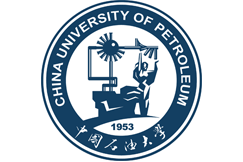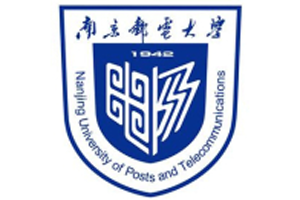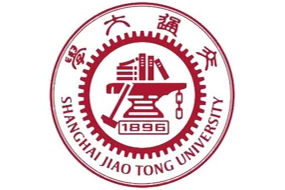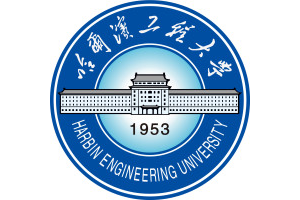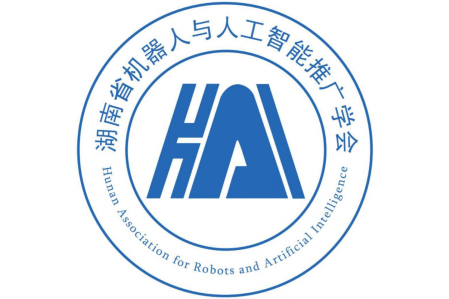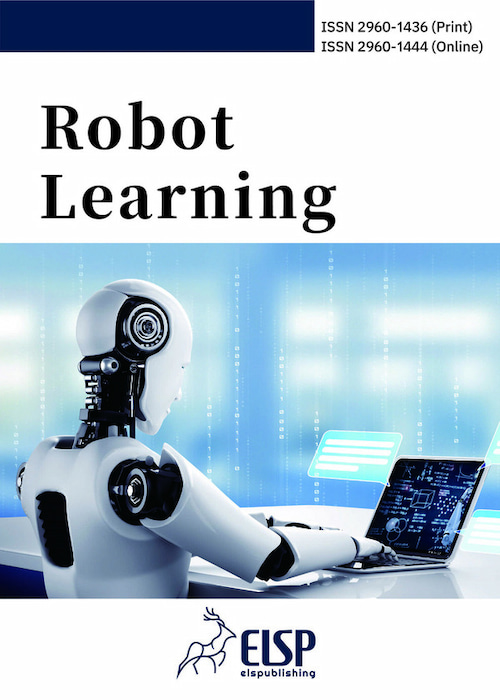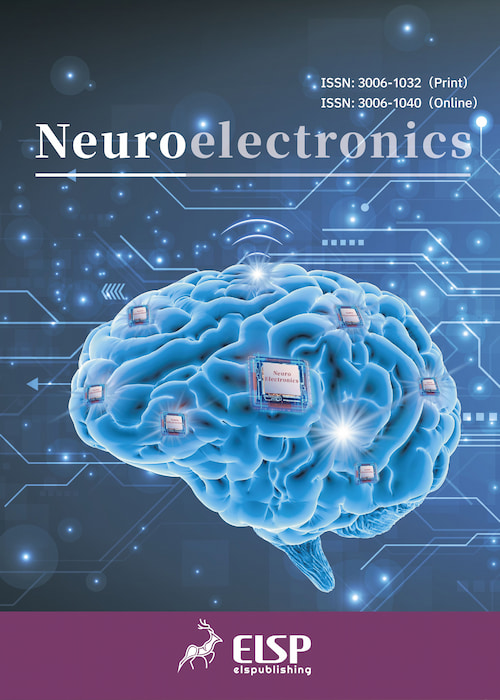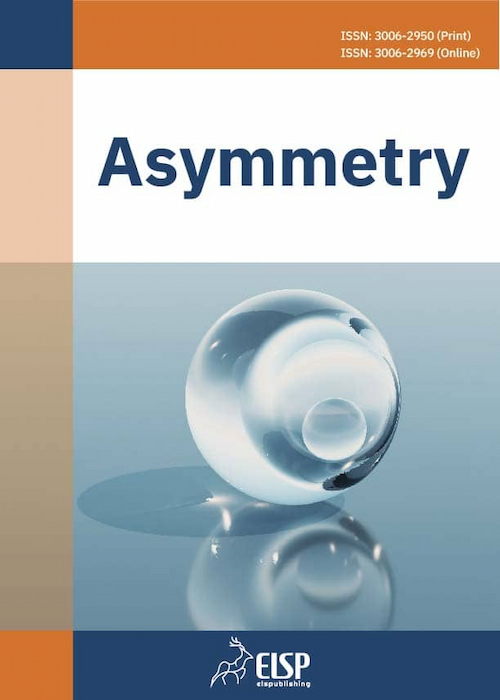AC会议论文平台致力于为国际学术会议组织者及参与者提供高效、稳定的全流程论文管理服务。我们支持论文提交、评审、收录和出版等环节,保障学术交流的严谨与顺畅。
学术会议



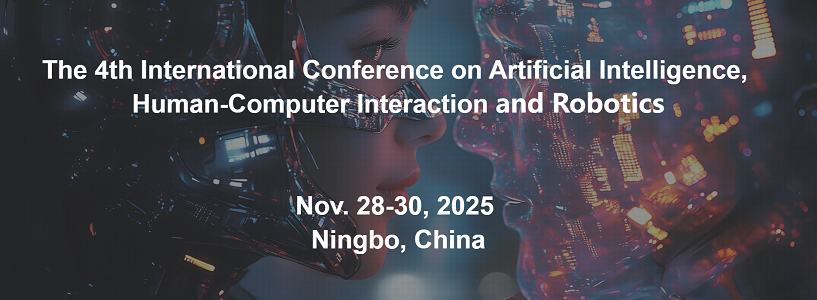



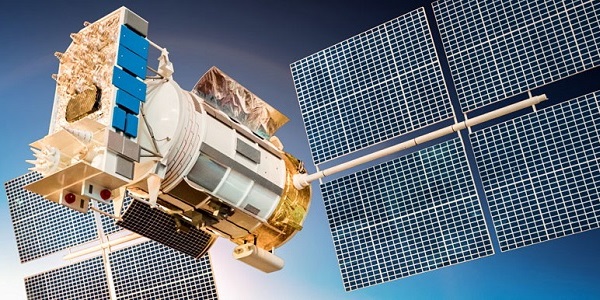
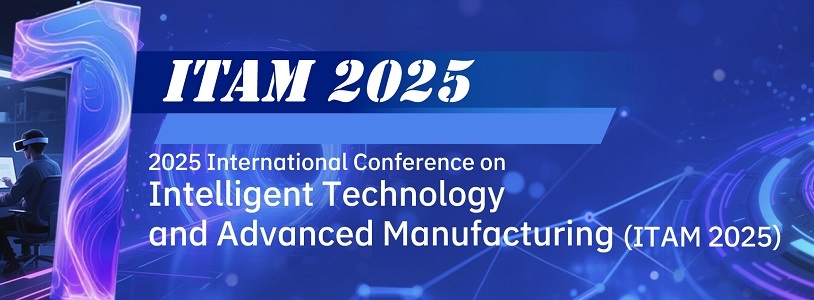
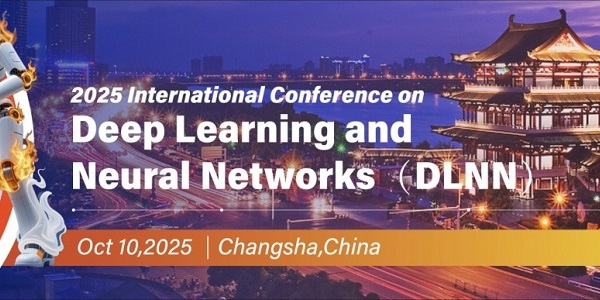
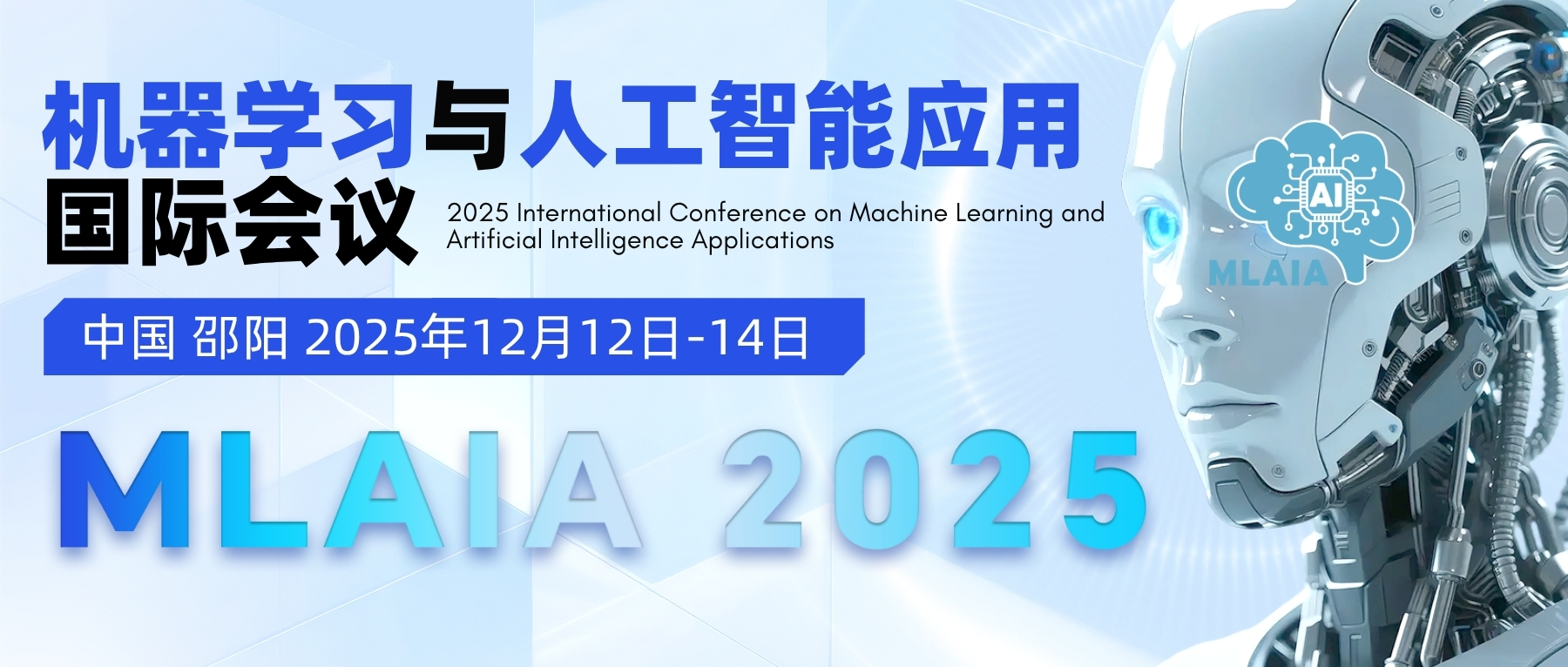
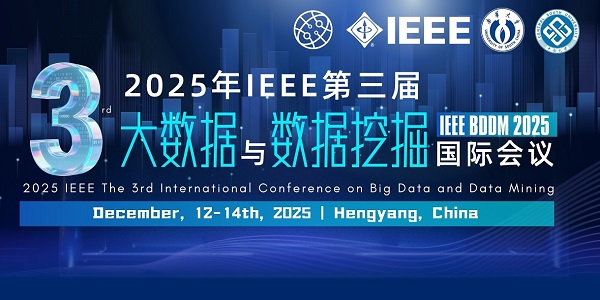
近期截稿会议


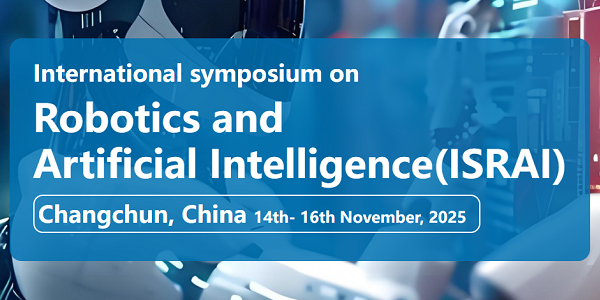

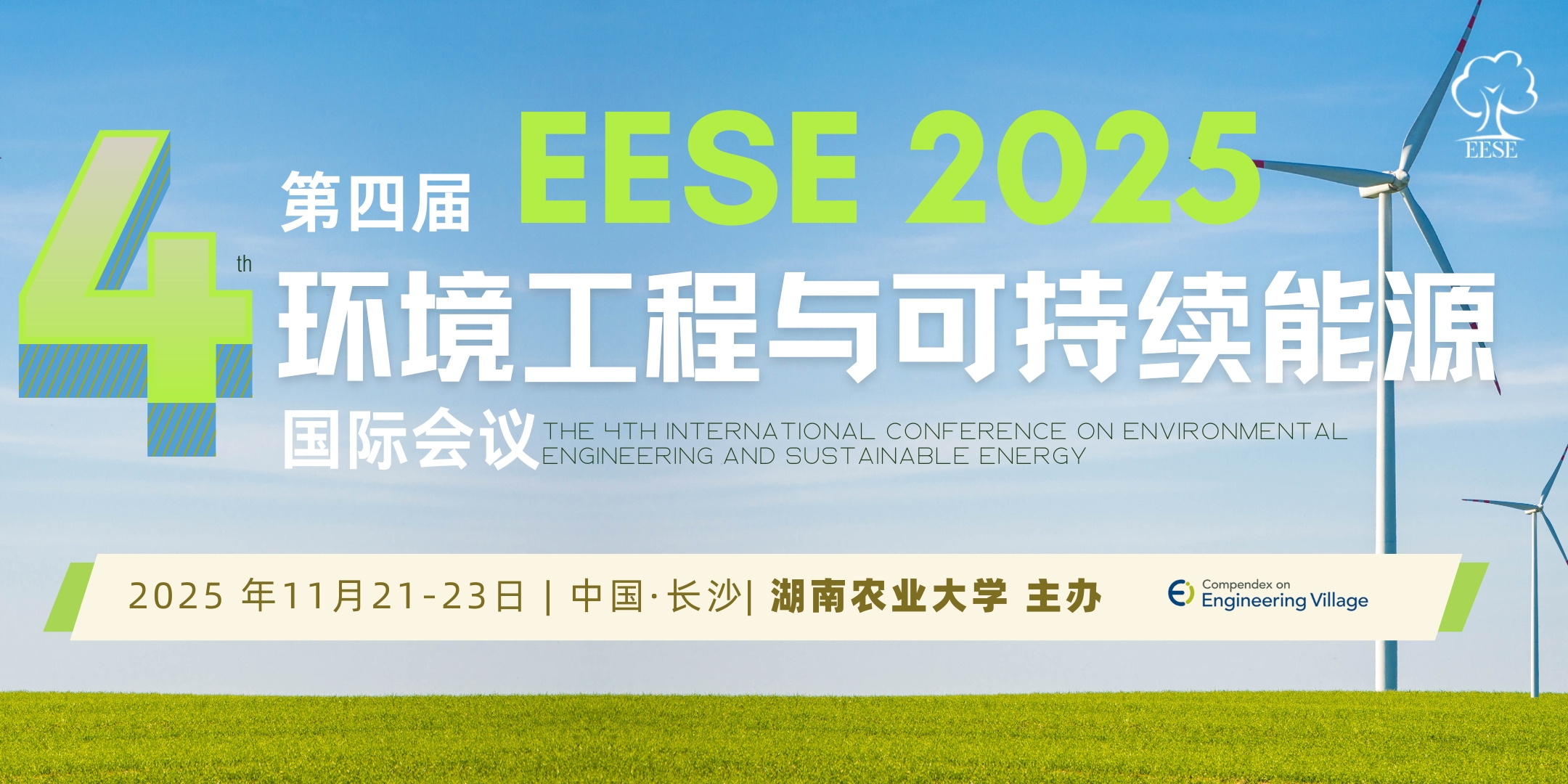



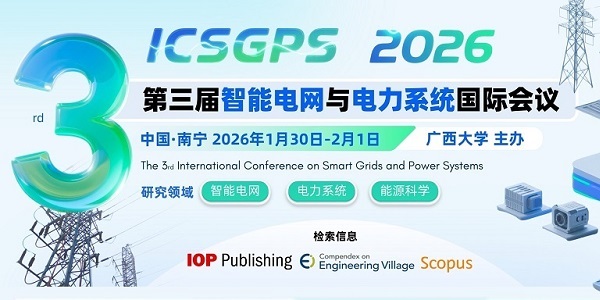


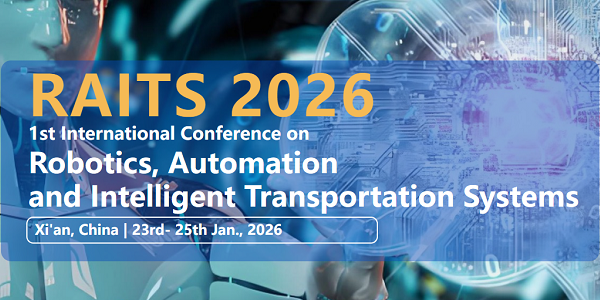
CCF推荐
| 名称 | 类别 | 年份 | 开会日期 |
|---|---|---|---|
| EuroSys: European Conference on Computer Systems | A类 | 2026 | 2026-04-13 |
| SoCC: ACM Symposium on Cloud Computing | B类 | 2025 | 2025-11-19 |
| HiPEAC: International Conference on High-Performance Embedded Architectures and Compilers | B类 | 2026 | 2026-01-26 |
| HPDC: ACM Symposium on High-Performance Parallel and Distributed Computing | B类 | 2026 | 2026-07-13 |
| SPAA: ACM Symposium on Parallelism in Algorithms and Architectures | B类 | 2025 | 2026-07-28 |
| NPC: IFIP International Conference on Network and Parallel Computing | C类 | 2025 | 2025-12-14 |
| HiPC: IEEE International Conference on High Performance Computing, Data, and Analytics | C类 | 2025 | 2025-12-17 |
| ASP-DAC: Asia and South Pacific Design Automation Conference | C类 | 2026 | 2026-01-19 |
| 名称 | 类别 | 年份 | 开会日期 |
|---|---|---|---|
| NSDI: Symposium on Networked Systems Design and Implementation | A类 | 2026 | 2026-05-04 |
| INFOCOM: IEEE International Conference on Computer Communications | A类 | 2026 | 2026-05-18 |
| MobiCom: ACM International Conference on Mobile Computing and Networking | A类 | 2026 | 2026-11-25 |
| CoNEXT: ACM International Conference on emerging Networking EXperiments and Technologies | B类 | 2025 | 2025-12-01 |
| IPCCC: International Performance, Computing, and Communications Conference | C类 | 2025 | 2025-11-23 |
| Globecom: IEEE Global Communications Conference, incorporating the Global Internet Symposium | C类 | 2025 | 2025-12-08 |
| WCNC: IEEE Wireless Communications & Networking Conference | C类 | 2026 | 2026-04-13 |
| ICC: IEEE International Conference on Communications | C类 | 2026 | 2026-05-24 |
| 名称 | 类别 | 年份 | 开会日期 |
|---|---|---|---|
| NDSS: Network and Distributed System Security Symposium | A类 | 2026 | 2026-02-23 |
| EUROCRYPT: European Cryptology Conference | A类 | 2026 | 2026-05-10 |
| TCC: Theory of Cryptography Conference | B类 | 2025 | 2025-12-01 |
| ASIACRYPT: Annual International Conference on the Theory and Application of Cryptology and Information Security | B类 | 2025 | 2025-12-08 |
| ACSAC: Annual Computer Security Applications Conference | B类 | 2025 | 2025-12-09 |
| IFIP WG 11.9: IFIP WG 11.9 International Conference on Digital Forensics | C类 | 2026 | 2026-01-05 |
| FC: Financial Cryptography and Data Security | C类 | 2026 | 2026-03-02 |
| DFRWS-EU: Digital Forensic Research Workshop | C类 | 2026 | 2026-03-23 |
| 名称 | 类别 | 年份 | 开会日期 |
|---|---|---|---|
| POPL: ACM SIGACT-SIGPLAN Symposium on Principles of Programming Languages | A类 | 2026 | 2026-01-11 |
| ICSE: International Conference on Software Engineering | A类 | 2026 | 2026-04-12 |
| ESEC/FSE: ACM Joint European Software Engineering Conference and Symposium on the Foundations of Software Engineering | A类 | 2026 | 2026-07-05 |
| OOPSLA: Conference on Object-Oriented Programming Systems, Languages, and Applications | A类 | 2026 | 2026-07-17 |
| ISSTA: The International Symposium on Software Testing and Analysis | A类 | 2026 | 2026-10-03 |
| Middleware: ACM/IFIP/USENIX International Middleware Conference | B类 | 2025 | 2025-12-15 |
| VMCAI: International Conference on Verification, Model Checking, and Abstract Interpretation | B类 | 2026 | 2026-01-11 |
| WICSA: IEEE International Conference on Software Architecture | C类 | 2026 | 2026-06-22 |
| 名称 | 类别 | 年份 | 开会日期 |
|---|---|---|---|
| SIGMOD: ACM Conference on Management of Data | A类 | 2026 | 2026-05-31 |
| CIDR: Biennial Conference on Innovative Data Systems Research | B类 | 2026 | 2026-01-18 |
| WSDM: International Conference on Web Search and Data Mining | B类 | 2026 | 2026-02-22 |
| ICDT: International Conference on Database Theory | B类 | 2026 | 2026-03-24 |
| EDBT: International Conference on Extending DB Technology | B类 | 2026 | 2026-03-24 |
| PODS: ACM SIGMOD Conference on Principles of DB Systems | B类 | 2026 | 2026-05-31 |
| ECIR: European Conference on Information Retrieval | C类 | 2026 | 2026-03-30 |
| PAKDD: Pacific-Asia Conference on Knowledge Discovery and Data Mining | C类 | 2026 | 2026-06-09 |
| 名称 | 类别 | 年份 | 开会日期 |
|---|---|---|---|
| FOCS: IEEE Symposium on Foundations of Computer Science | A类 | 2025 | 2025-12-14 |
| STOC: ACM Symposium on Theory of Computing | A类 | 2026 | 2026-06-22 |
| FSTTCS: Foundations of Software Technology and Theoretical Computer Science | C类 | 2025 | 2025-12-17 |
| CSL: Computer Science Logic | C类 | 2026 | 2026-02-23 |
| 名称 | 类别 | 年份 | 开会日期 |
|---|---|---|---|
| IEEE VR: IEEE Conference on Virtual Reality and 3D User Interfaces | A类 | 2026 | 2026-03-21 |
| DCC: Data Compression Conference | B类 | 2026 | 2026-03-24 |
| ICASSP: International Conference on Acoustics, Speech, and Signal Processing | B类 | 2026 | 2026-05-06 |
| MMAsia: ACM Multimedia Asia | C类 | 2025 | 2025-12-09 |
| ICVRV: International Conference on Virtual Reality and Visualization | C类 | 2025 | 2025-12-19 |
| MMM: International Conference on Multimedia Modeling | C类 | 2026 | 2026-01-29 |
| 3DV: International Conference on 3D Vision | C类 | 2026 | 2026-03-20 |
| PacificVis: IEEE Pacific Visualization Symposium | C类 | 2026 | 2026-04-20 |
| 名称 | 类别 | 年份 | 开会日期 |
|---|---|---|---|
| NIPS: Annual Conference on Neural Information Processing Systems | A类 | 2025 | 2025-12-02 |
| AAAI: AAAI Conference on Artificial Intelligence | A类 | 2026 | 2026-01-20 |
| CVPR: IEEE Conference on Computer Vision and Pattern Recognition | A类 | 2026 | 2026-06-03 |
| ICRA: IEEE International Conference on Robotics and Automation | B类 | 2026 | 2026-06-01 |
| ICAPS: International Conference on Automated Planning and Scheduling | B类 | 2026 | 2026-06-27 |
| ACML: Asian Conference on Machine Learning | C类 | 2025 | 2025-12-09 |
| ALT: International Conference on Algorithmic Learning Theory | C类 | 2026 | 2026-02-23 |
| AISTATS: International Conference on Artificial Intelligence and Statistics | C类 | 2026 | 2026-05-02 |
| 名称 | 类别 | 年份 | 开会日期 |
|---|---|---|---|
| CSCW: ACM Conference on Computer Supported Cooperative Work and Social Computing | A类 | 2026 | 2026-02-27 |
| CHI: ACM Conference on Human Factors in Computing Systems | A类 | 2026 | 2026-04-16 |
| PerCom: IEEE International Conference on Pervasive Computing and Communications | B类 | 2026 | 2026-03-16 |
| IUI: ACM International Conference on Intelligent User Interfaces | B类 | 2026 | 2026-03-23 |
| ECSCW: European Computer Supported Cooperative Work | B类 | 2026 | 2026-06-29 |
| DIS: ACM conference on Designing Interactive Systems | C类 | 2026 | 2026-06-13 |
| 名称 | 类别 | 年份 | 开会日期 |
|---|---|---|---|
| RTSS: Real-Time Systems Symposium | A类 | 2025 | 2025-12-02 |
| WWW: International World Wide Web Conferences | A类 | 2026 | 2026-04-13 |
| BIBM: IEEE International Conference on Bioinformatics and Biomedicine | B类 | 2025 | 2025-12-15 |
| ISMB: International Conference on Intelligent Systems for Molecular Biology | B类 | 2026 | 2026-07-12 |
| CogSci: Cognitive Science Society Annual Conference | B类 | 2026 | 2026-07-22 |
| MICCAI: International Conference on Medical Image Computing and Computer-Assisted Intervention | B类 | 2026 | 2026-10-04 |
| ICIC: International Conference on Intelligent Computing | C类 | 2026 | 2026-07-22 |
学术期刊
学术动态
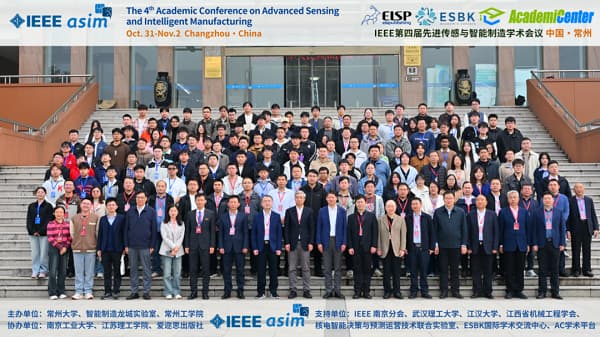
11-13
2025年10月31日至11月2日,第四届先进传感与智能制造学术会议(ASIM 2025)在常州大学召开。本次会议由常州大学、智能制造龙城实验室、常州工学院共同主办,江苏理工学院、南京工业大学、爱迩思出版社(ELSP)协办,并获IEEE南京分会、武汉理工大学、江汉大学、ESBK国际学术中心、AC学术平台等多家单位支持。
会议积极响应国家制造强国战略,聚焦先进传感与智能制造前沿议题,吸引了来自97家高校、科研机构与企业的200余名专家学者参会,深入探讨该领域的最新进展与发展趋势。智能制造龙城实验室执行主任王永青,西安交通大学米兰理工联合学院执行院长杨树明,南京大学博士生导师李根喜,香港理工大学教授徐宾刚,常州大学党委副书记、校长陈海群出席会议。机械学院院长刘麟主持大会开幕式。
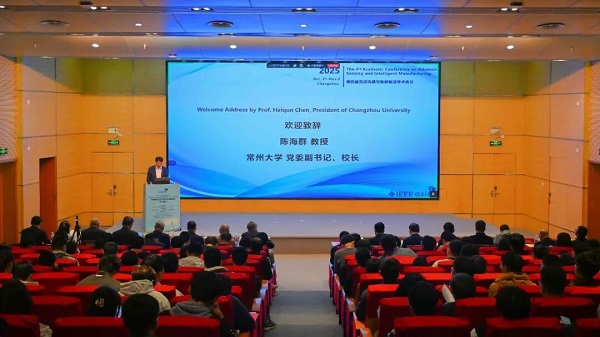
大会现场
陈海群在大会开幕式致欢迎词。他强调,在新一轮科技革命推动下,制造业正加速向“高端化、智能化、绿色化”迈进。本次会议围绕先进传感与智能制造的关键科学与工程问题,搭建了跨学科对话平台,具有重要意义。他希望以此次学术会议为契机,进一步促进智能制造领域科技创新与产业融合,深化与国内外高校及企业的合作,为制造业转型升级贡献“常大智慧”。
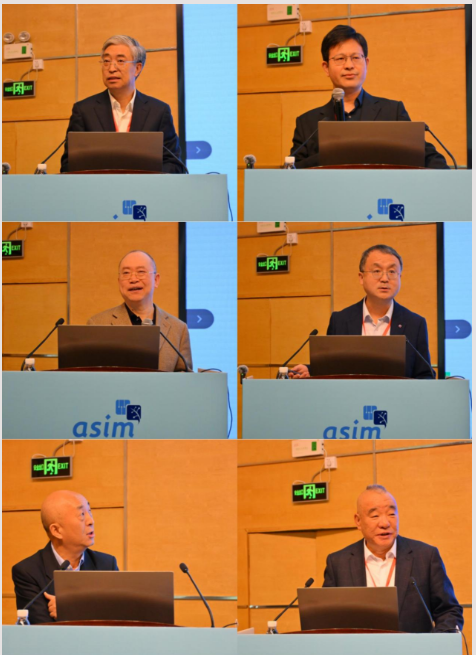
与会专家学者
大会报告环节,王永青、杨树明、李根喜、徐宾刚分别作《智能制造中的集成测量-加工技术》《半导体芯片缺陷检测新方法探索》《基于生物传感器的外泌体分析方法及其在癌症精准诊断中的应用》《先进的可穿戴传感技术》大会主旨报告,分享了最新研究成果。常州大学沈惠平教授作《一种新型折叠运动平台并联机构的设计与分析》特邀报告,江苏汤姆森智能装备有限公司董事长汤建华作《智能制造赋能包装装备产业新质生产力》行业特邀报告,展现了产学研深度融合的实践成果。
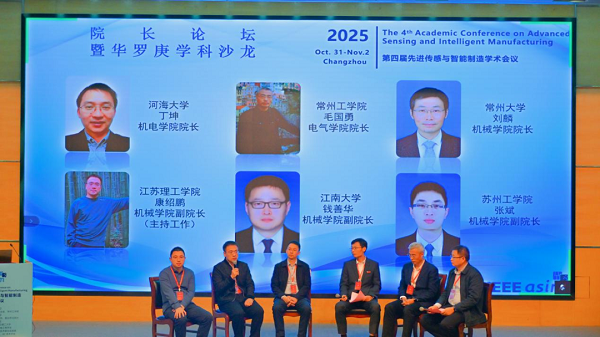
院长论坛现场
会议期间举行了院长论坛,河海大学机电工程学院院长丁坤、常州工学院电气信息工程学院院长毛国勇、江苏理工学院机械学院副院长(主持工作)康绍鹏、江南大学机械学院副院长钱善华、苏州工学院机械学院副院长张斌,以及常州大学机械学院院长刘麟,围绕各学院的学科特色、人才培养亮点等开展了深入交流。
11月1日下午,会议设置四个平行分会场,86场报告围绕柔性电子、生物传感、纳米制造、数字孪生、机器视觉、智能机器人等热点方向展开多维探讨,会议现场学术氛围浓厚。会后,部分参会人员参观了中国(常州)德国中心、同方威视科技江苏有限公司,实地感受常州金坛的智能制造产业生态。
本次会议为专家学者搭建了高水平学术交流平台,有力促进了先进传感与智能制造领域的创新协作与成果转化,为推动智能制造行业高质量发展汇聚了智慧与力量。

11-12
The survey “A Survey on Omni-Modal Language Models” offers a systematic overview of the technological evolution, structural design, and performance evaluation of omni-modal language models (OMLMs). The work highlights how OMLMs enable unified perception, reasoning, and generation across modalities, contributing to the ongoing progress toward Artificial General Intelligence (AGI).
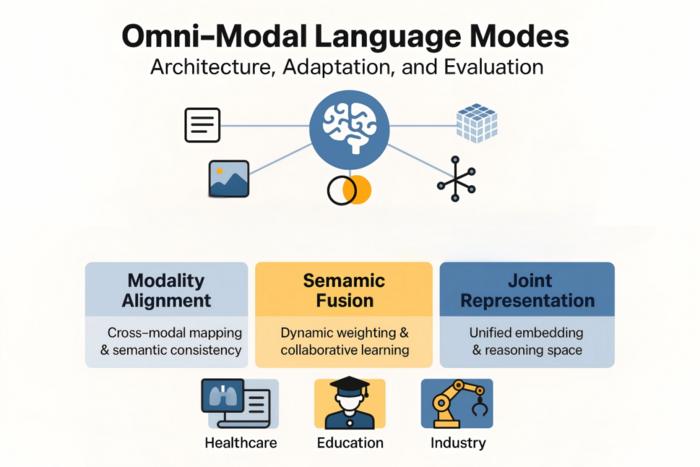
image: Omni-modal language models integrate modality alignment, semantic fusion, and joint representation to enable unified perception and reasoning across text, image, and audio modalities.
Credit: Zheyun Qin & Lu Chen / Shandong University & Shandong Jianzhu University
Recently, Lu Chen, a master’s student at the School of Computer and Artificial Intelligence, Shandong Jianzhu University, in collaboration with Dr. Zheyun Qin, a postdoctoral researcher at the School of Computer Science and Technology, Shandong University, published a comprehensive review entitled “A Survey on Omni-Modal Language Models” in AI+ Journal.
The paper provides an in-depth analysis of the core technological evolution, representative architectures, and multi-level evaluation frameworks of omni-modal language models (OMLMs)—a new generation of AI systems that integrate and reason across multiple modalities, including text, image, audio, and video.
Unlike traditional multimodal systems dominated by a single input form, OMLMs achieve modality alignment, semantic fusion, and joint representation learning, enabling dynamic collaboration among modalities within a unified semantic space. This paradigm allows end-to-end task processing—from perception to reasoning and generation—bringing AI one step closer to human-like cognition.
The study also introduces lightweight adaptation strategies, such as modality pruning and adaptive scheduling, to improve deployment efficiency in real-time medical and industrial scenarios. Furthermore, it explores domain-specific applications of OMLMs in healthcare, education, and industrial quality inspection, demonstrating their versatility and scalability.
“Omni-modal models represent a paradigm shift in artificial intelligence,” said Lu Chen, the first author of the paper.
“By integrating perception, understanding, and reasoning within a unified framework, they bring AI closer to the characteristics of human cognition.”
Corresponding author Dr. Zheyun Qin added:
“Our survey not only summarizes the current progress of omni-modal research but also provides forward-looking insights into structural flexibility and efficient deployment.”
This work offers a comprehensive reference for researchers and practitioners in the field of multimodal intelligence and contributes to the convergence of large language models and multimodal perception technologies.
This paper was published in AI Plus (Chen L., Mu J., Wang J., Kang X., Xi X., Qin Z., A Survey on Omni-Modal Language Models, AI Plus, 2026, 1:0001. DOI: 10.55092/aiplus20260001).
Source from [https://www.eurekalert.org/news-releases/1105454].

11-12
With the development of science and technology, green technology and various advanced information technology have been utilized to make cities more and more low-carbon, intelligent and ecological. Cities can operate more efficiently and the life quality of urban residents can be improved as civil construction, city planning, management and services developed.
GBCESC 2025 aims to offer research scholars and engineers a platform for the interchange of cutting-edge technological achievements. During the conference, the scholars, experts and engineers will be able to exchange technical knowledge, discuss innovative and effective solutions and address challenges in the fields of green building, civil engineering and smart city.
We warmly invite experts and scholars to participate in GBCESC 2025. Hope you can enjoy a joyful and fruitful academic journey.
Conference Information
- Conference Theme: The 4th International Conference on Green Building, Civil Engineering and Smart City (GBCESC 2025)
- Date: December 5-7, 2025
- Location: Xiangtan, China
- Sponsored by : Hunan Institute of Engineering
Organized by: School of smart construction and energy engineering, Hunan Institute of Engineering
Co-Sponsored by:
Hunan University
Central South University
Guilin university of technology
Beijing University of Technology
Kunming University of Science and Technology
Henan Provincial Engineering Research Center for Ecological Architecture and Environmental Construction
Hunan Institute of Science and Technology
Xiangtan University
Hunan University of Science and Technology
Supported by:
American Concrete Institute
Soochow University
Nanjing Tech University
Southwest Forestry University
Yunnan Agricultural University
Northwestern Polytechnical University
The University of Saint Joseph
Committee on Infrastructure Seismic Protection and Disaster Mitigation, Seismological Society of China
High-Speed Railway of Construction Technology of National Engineering Research Center of China
China-Portugal Joint Laboratory of Cultural Heritage Convservation Science Supported - The Belt and Road Initiative
China Association of Building Energy Efficiency
Key Lab for Intelligent Infrastructure and Monitoring of Fujian Province
- Publication: All accepted papers will be published in the conference proceedings and submitted to Springer (the first edition has been successfully indexed).
Registration Fee Waive Policy
Contact Publishing Consultant Rona at ronnaggr86@gmail.com.
Call for Papers
The conference is soliciting state-of-the-art research papers in the following areas of interest:
Green Building
Habitat Reconstruction
Ecological Architecture
Building Energy-Saving Technology
Building materials (green materials, advanced materials, traditional materials)
Architectural Environment and Equipment Engineering
Intelligent Building
Carbon Capture and Storage
Indoor Environment
Urban Planning and Design
Civil Engineering
Geological Engineering
Municipal Engineering
Disaster Prevention and Mitigation Engineering
Structural Engineering
Heating, Gas, Ventilation and Air Conditioning Engineering
Road Engineering
Bridge and Tunnel Engineering
Tunnel and Underground Engineering
Water Supply and Sewerage Project
Ocean Engineering
Port Engineering
Seismic Engineering
Computer Simulation
Road Survey and Design
Hydromechanics
Soil Mechanics
Construction Technology and Management
Engineering Geology
Intelligent Construction
Smart City
Smart Buildings
Smart Transportation
Intelligent Transportation Systems
Smart Environment
Smart Living
Smart Mobility
Smart Healthcare
Smart Home
Environment and Urban Monitoring
Deployments for Smart Cities
Smart Water System
Smart Manufacturing and Logistics
Information and Communication Technologies (ICT) for Smart City
Internet-of-Things for Smart Cities
Smart Mobile Devices
Human-Machine Interfaces
Deployments for Smart Cities
Smart Grid
---
Submission Guidelines
Both abstract and full paper submissions are accepted.
Paper should be written in English, of academic value and must not have been previously published in academic journals or conference proceedings, either domestically or internationally.
Requirements for papers included in conference proceeding:
The abstract, keywords, and conclusion sections must reflect the conference's theme. The article should primarily include technical papers that feature a methodology, figures and charts, experimental data, and results.
Please know that a high Similarity percentage/ spotted plagiarism in any form/ type may lead to rejection of the complete manuscript. Similarity rate should not exceed 10-15% (and no more than 5% for each source).
Authors are required to submit original Full Paper of at least 12 pages without references(in correct format), and contain 4,000 words, excluding references and the first page.
The paper includes a maximum of 30 references and a minimum of 10 references. Self-citations and webpages citation are not allowed; you may use only a self-citation as a reference where this is appropriate and approved by the editor.
Any plagiarism or AI-generated content are not allowed.
Please revise the paper and return the author response after you receive reviewer's comments.
Please prepare your papers on the basis of full paper Template(http://www.gbcesc.org/?attachment_id=17537&download=1), abstract template(https://www.gbcesc.org/?attachment_id=17304&download=1), Please also check the Author Guideline(https://www.springer.com/gp/authors-editors/book-authors-editors/your-publication-journey/manuscript-preparation).
For paper authors who plan to attend the conference or give an oral/poster presentation, please complete the registration via the following link:
https://topchair.academicenter.com/registration/1912436705442619392
Host City & Organizers
Xiangtan(湘潭)is a vibrant city steeped in history and culture, nestled along the Xiang River. Known as the hometown of Mao Zedong, it attracts visitors with its revolutionary heritage sites and serene landscapes. The city's old streets are dotted with traditional architecture, while modern developments blend seamlessly with its historic charm. Xiang Tan is also famous for its lotus flowers and local cuisine. Though it may not be a primary tourist destination, it offers a peaceful retreat for those exploring central China, with most visitors being domestic tourists.
Join Us in 2025!
Whether you are submitting a paper, attending workshops, or exploring industry exhibitions, GBCESC 2025 promises to inspire and connect the global Civil Engineering community. Visit our website for updates on keynote speakers, social events, and travel information.
Contact
Submit your work today!
Email: ronnaggr86@gmail.com
Tel / WeChat: Rona +86 15507494120 (Conference Secretry)
Source from [https://www.eurekalert.org/news-releases/1105455].

11-12
The evolution of civil and hydraulic engineering spans across historical eras, deeply intertwined with societal, economic, and scientific advancement. Particularly, it mirrors the progress in science and technology. Emerging as the harmonious amalgamation of contemporary information technology and construction, intelligent construction emerges as the prime catalyst propelling the transformation and enhancement of the construction sector, steering it towards modernization.
Centered around civil engineering, water management, and intelligent construction, this conference strives to bridge the latest scholarly accomplishments with the existing industrial technological landscape. It aims to furnish diverse insights to businesses, educational institutions, and academics, comprehensively showcasing novel technologies, innovative paradigms, and recent milestones in related domains. By doing so, it aims to foster synergistic growth between academic accomplishments and industrial progress.
Conference Information
- Conference Theme: The 2nd International Conference on Civil Engineering and Smart Construction (ICCESC 2025)
Official Website: https://www.ic-cesc.com/
- Publication: All accepted papers will be published in the conference proceedings and submitted to Springer (the first edition has been successfully indexed).
Registration Fee Waive Policy
Contact Publishing Consultant Rona at ronnaggr86@gmail.com.
Call for Papers
The conference is soliciting state-of-the-art research papers in the following areas of interest:
Civil Engineering
Geotechnical Engineering
Structural Engineering
Geological Engineering
Seismic Engineering
Railway Engineering
Highway Engineering
River&Coastal Engineering
Port and Waterway Engineering
Tunnel and Bridge Engineering
Construction Technology
Civil Engineering Design and Theory
Civil Engineering Material
Civil Engineering Machinery and Equipment
Disaster Prevention and Mitigation
Architectural design and its theory
Hydraulic Engineering
Engineering Hydrology
Water and Hydropower Calculation
Engineering Survey
Smart Construction
Smart construction
Intelligent Construction
Intelligent design
Intelligent equipment
Man-machine collaboration
Intelligent construction system development and application practice
Green construction technology and intelligence
Intelligent construction equipment and robots
Digital construction
Intelligent technology
Green building
Green Architecture
Intelligent building
Engineering intelligent design
Intelligent construction algorithm
Intelligent construction robot technology
Intelligent engineering survey and planning
Engineering informatization
Engineering intelligence
Wireless transformation
Communication System Engineering
Predictive maintenance
Garage management system engineering
Building Equipment Automatic System
Security monitoring and anti-theft alarm system engineering
---
Submission Guidelines
1. Prospective authors are kindly invited to submit full papers that include title, abstract, introduction, tables, figures, conclusion and references. It is unnecessary to submit an abstract in advance. Please submit your papers in English.
2. One regular registration can cover a paper of 8 pages, and additional pages will be charged. Please format your paper well according to the conference template below before submission.
3. Paper Template: Please prepare your paper in both .doc/.docx and .pdf format and submit your full paper.
Template:
(Click me)
doc/.docx :http://www.icivis.net/?attachment_id=25318&download=1
LaTeX:http://www.icivis.net/?attachment_id=24810&download=1
Submission: please click here for paper submission.
https://cms.elspub.com/submission/stepone?conf_id=1730114919184449536&type=submit
Contact
Submit your work today!
Email: ronnaggr86@gmail.com
Tel / WeChat: Rona +86 15507494120 (Conference Secretry)
Source from [https://www.eurekalert.org/news-releases/1105456].
天津大学微电子学院顺应国家集成电路产业大发展战略和“新工科”建设要求,落实立德树人的根本任务,瞄准建设世界一流学科、建设一流国家示范性微电子学院的目标,大力推进学院教育教学、科学研究、学科建设等各项事业建设发展,全力为国家集成电路产业发展培养和输送源源不断的卓越人才,诚邀海内外优秀人才加入。
天津大学微电子学院简介
天津大学(Tianjin University),简称天大,其前身为北洋大学,始建于1895年10月2日,是中国第一所现代大学,开中国近代高等教育之先河。天津大学是“211工程”、“985工程”首批重点建设的大学,入选国家“世界一流大学建设”A类高校。
天津大学微电子学院,是全国28所建设与筹备建设国家示范性微电子学院之一,现有在校本科生800余人,各类型研究生700余人。学院现有包含加拿大工程院外籍院士、新加坡两院院士、IEEE Fellow在内的各类国家级人才十余人、入选天津市创新团队1个、入选2025斯坦福全球前2%顶尖科学家9人。
学院学科实力雄厚,共有电子科学与技术、集成电路科学与工程两个一级学科及博士后流动站、微电子学与固体电子学为国家二级重点学科,集成电路科学与工程博士和硕士学位授权点已通过国务院学位办增列并开始招生,同时,学院拥有学院包括智能传感功能材料全国重点实验室、有机集成电路教育部重点实验室等16个省部级省部级平台,形成了以“通信”、“成像”、“感知”、“定位”为核心的特色发展方向,承担了多项国家自然科学基金重大重点项目、国家重点研发计划等国家级及省部级科研任务,并与众多龙头企业深化产教融合、协同育人,共同构建产学研用一体化的创新生态。
利用自身的师资与技术优势,微电子学院以联合培养产业高端技术与管理人才,搭建企业服务平台,打造校企合作示范性项目,为地企合作建言献策等形式,积极服务区域集成电路产业的发展。
“芯火”双创平台简介
天津国家芯火双创平台是由天津大学下属全资子公司(天津天芯微系统集成研究院有限公司)负责运营, 是全国十个获批“国家级芯火双创平台”之一。天津国家芯火双创平台以“芯片微系统+”为特色面向集成电路领域国家重大战略需求和京津冀区域发展战略,为天津市集成电路企业提供公共技术服务,目前下设公共服务平台、人才引进与培训平台、芯片整机联动服务平台、IP研发服务平台、产教融合创新平台、创业孵化服务平台六大服务平台。天津国家芯火双创平台延续并承接原有天津市集成电路设计中心(ICC)平台的产业服务功能、相关资质,聚焦集成电路国产替代,通过政、产、学、研、用、金、服同向发力,致力于为集成电路创业者提供全方位服务,营造浓厚的集成电路产业氛围,助力实现集成电路高水平自立自强,持续推动天津集成电路产业发展。
学科领域
电子科学与技术:异质异构微波/太赫兹技术与系统、智能感算芯片与电子系统、微纳电子材料与器件
集成电路科学与工程:器件、材料与工艺、集成电路设计与EDA、微系统与封装测试
招聘岗位
讲席教授、英才教授、英才副教授、副研究员、博士后
岗位职责
01.讲席教授
1.准确把握本学科的发展方向,提出具有战略性、前瞻性、创造性的研究构想,带领本学科在前沿领域赶超或保持国际先进水平。
2. 致力于教师整体素质和研究水平的提高,积极培养和引进优秀人才。
02.英才教授
1.具有较高教学水平,具备高素质拔尖创新人才培养的经验或能力,完成学校和学院规定的各项教学工作任务,深入开展教学研究和改革,并取得突出的教学成果。
2. 具有符合学科发展的独立研究方向,能够带领本学科服务国家经济社会发展重大需求,能够引领本学科开展国际先进水平的学术研究。
3. 在学科建设、基地建设、人才引进和国际交流合作等方面发挥重要作用。
03.英才副教授(特聘研究员)
1. 具有较高的教学水平,具备高素质拔尖创新人才培养的经验或能力,完成学校和学院规定的各项教学工作任务,开展教学研究和教学改革,并取得良好的教学成果。
2. 从事高水平科学研究,研究方向符合本学科发展需要,在国内外相关领域表现突出并获得同行专家认可。
3. 在学科建设、基地建设、人才引进和国际交流合作等方面发挥积极作用。
04.副研究员
1. 研究方向符合本学科发展需要,在其研究领域取得一定的学术成就,具有较好的学术发展潜力。
2. 积极参与学科建设,参加本学科领域高级别国际学术会议以及其他形式国际学术交流活动,积极承担和参与国家及省部市各级科技项目。
3. 原则上应具有两年及以上博士后工作经历,特别优秀的可放宽要求。
05.博士后(助理研究员)
主要从事基础研究、应用研究、科技成果转化及教学辅助等工作,支持人才团队、学科建设和科研基地发展等。
其他拟开放教职岗位欢迎联系人事专员咨询。
聘任待遇
学校和国家、天津市共同提供具有竞争力的薪酬、福利待遇,优厚的科研启动经费及良好的工作和生活条件。有落户需求的,按照天津市政策要求办理落户。讲席教授、英才教授、英才副教授岗位以事业编制聘用。副研究员、博士后岗位签订劳动合同。
报名方式
请扫描以下二维码进行报名:

或登录报名表链接填报:天津大学第十八届北洋青年科学家论坛:https://docs.qq.com/form/page/DWWlQbk5BRHVMeXhN。
本招聘仅接受通过此专属报名二维码提交的申请,其他报名路径无效。如有疑问或报名其他岗位请咨询联系人。
联系人:云阔
电话:+86-022-27405714
邮箱:kuo.yun@tju.edu.cn
地址:天津市南开区卫津路92号天津大学第20教学楼212
关于会议论文被SCI收录后的分区计算规则,我们可以从以下几个方面来清晰地理解:
核心结论
会议论文本身没有独立的分区。 它的分区完全取决于刊登该论文的会议论文集 所被收录的SCI期刊的分区。
简单来说,当一篇会议论文被SCI收录时,它实际上是作为某个特定期刊(通常是增刊或特刊)的一篇文章被收录的。因此,这篇会议论文的分区、影响因子等所有期刊评价指标,都等同于该本期刊。
详细规则解析
1. 收录模式:会议论文集作为期刊特刊/增刊
这是最常见的模式。一个高水平的国际会议会与一家SCI期刊(通常是该领域的知名期刊)合作,将优秀会议论文以特刊或增刊的形式出版。
例如: 著名会议IEEE International Conference on Data Engineering的优秀论文可能会在期刊《IEEE Transactions on Knowledge and Data Engineering》上以特刊形式出版。
分区计算: 在这种情况下,你的会议论文的分区就是《IEEE Transactions on Knowledge and Data Engineering》这个期刊的分区。
2. 收录模式:会议有独立的会议期刊
少数顶尖会议拥有自己独立的、名称与会议高度相关的期刊,这个期刊本身就是SCI收录的。
例如: 计算机视觉顶级会议CVPR的论文集就发表在名为《IEEE/CVF Conference on Computer Vision and Pattern Recognition》的期刊上,该期刊被SCI收录。
分区计算: 在这种情况下,你的会议论文的分区就是这个独立的会议期刊(如《IEEE/CVF Conference on Computer Vision and Pattern Recognition》)的分区。
如何查询和确认分区?
要确定你的会议论文的分区,你需要遵循以下步骤:
1. 找到收录你论文的期刊名称:
这是最关键的一步。在会议官网、论文录用通知、或者最终出版的论文页眉页脚处,通常会明确写明“Published in”或“To appear in”哪本期刊。
在Web of Science核心合集中检索你的论文,检索结果中的“来源出版物”字段就是该期刊的名称。
2. 查询该期刊的最新分区:
目前国内最主流的分区标准有两种:
中国科学院文献情报中心分区(中科院分区):
查询平台: 中科院文献情报中心分区表在线平台。
特点: 按照期刊3年平均IF进行划分,分区阈值较高。将每个学科的所有期刊分为1区(前5%)、2区(前6%-20%)、3区(前21%-50%)、4区(后50%)。1区通常被认为是顶尖期刊。
JCR分区(科睿唯安分区):
查询平台: Web of Science平台上的Journal Citation Reports。
特点: 按照期刊最新一年的IF进行划分。将每个学科的所有期刊分为Q1(前25%)、Q2(前25%-50%)、Q3(前50%-75%)、Q4(后75%)。Q1和Q2通常被认为是优秀期刊。
注意: 国内高校和科研单位在考核、毕业、评奖时,普遍以中科院分区为准,但具体标准请务必以你所在单位的规定为准。
总结与关键要点
● 会议论文无独立分区:分区依附于其被收录的期刊。
● 先找期刊,再查分区:确认你的会议论文被发表在哪本具体的SCI期刊上,然后去查询这本期刊在中科院分区或JCR分区中的位置。
● 分区是动态的:期刊的分区每年都会更新,你的论文分区以发表当年的期刊分区为准。但很多单位在考核时会要求是“最新分区”。
● 区分“收录”和“检索”:
收录: 指论文已被期刊接受并在线或纸质出版。
检索: 指论文能在Web of Science数据库中查到。从收录到检索通常有几个月的时间延迟。只有在能被检索后,才算是真正被SCI收录。
举例说明
假设你的一篇论文被 ACM SIGKDD International Conference on Knowledge Discovery and Data Mining 录用,并被推荐到期刊 《ACM Transactions on Knowledge Discovery from Data》 的特刊上发表。
1. 你的论文最终发表在《ACM Transactions on Knowledge Discovery from Data》上。
2. 你登录中科院分区表在线,查询《ACM Transactions on Knowledge Discovery from Data》。
3. 假设查询结果显示该期刊在“计算机科学”大类为2区。
4. 那么,你这篇会议论文的SCI分区就是中科院2区。
希望这个详细的解释能帮助你完全理解会议论文的SCI分区规则。
对于研究者,尤其是硕士、博士研究生和青年学者来说,选择将论文投递给会议还是期刊,是一个关键的决策。下面将从多个维度对会议和期刊进行综合对比,并提供一个决策流程图,帮助你做出最适合自己的选择。
核心摘要
学术会议:特点是快。追求快速发布、快速获得反馈、快速建立学术联系。是许多计算机科学、电子工程等领域早期研究的首选。
学术期刊:特点是稳。追求严谨、完整、可靠和存档。是大多数传统学科(如物理、化学、生物、医学、社会科学等)研究成果的最终归宿。
综合对比表格
| 对比维度 | 学术会议 | 学术期刊 |
|---|---|---|
| 审稿周期 | 短。通常为1-3个月,有严格的截稿日期。 | 长。通常为3-12个月甚至更久,可以随时投稿。 |
| 出版速度 | 快。录用后1-3个月内即可在会议论文集(线上或线下)出版。 | 慢。从接受到在线发表仍需数周至数月,纸质版更慢。 |
| 评审方式 | 单向/双盲。审稿人知道作者信息(单向),或双方互不知情(双盲)。评审更注重创新性和即时性。 | 双盲/开放。更注重正确性、完整性、可重复性和贡献度。 |
| 严谨性与完整性 | 要求有初步的、创新的成果,但可以是不完整的工作进展。 | 要求是成熟、完整、全面的研究工作,包含详实的实验和深入的分析。 |
| 认可度与影响力 | 因领域而异。在计算机科学、人工智能等领域,顶级会议(如CVPR, NeurIPS, ICML, SIGCOMM)的认可度等同于甚至高于顶级期刊。 | 普遍较高。在大多数传统学科中,期刊(尤其是高影响因子期刊)是衡量学术水平的金标准。 |
| 反馈与交流 | 强。可以现场参会,与同行直接交流,获得即时反馈,建立人脉。 | 弱。通常只有书面的审稿意见,缺乏面对面的深度互动。 |
| 出版形式与存档 | 会议论文集(Proceeding),通常是非正式出版,有ISBN号。部分会议与Springer、IEEE等合作。 | 期刊文章(Article),是正式、永久的学术记录,有ISSN号,被视为“最终版本”。 |
| 费用 | 注册费通常较高(尤其国际会议),包含参会、出版等费用。 | 出版费(APC)或订阅费,但无参会旅费。开放获取(OA)期刊的APC可能很高。 |
| 后续扩展 | 常见模式:将会议论文进行大幅扩展(通常增加30%以上新内容)后投递给期刊。 | 通常是研究的终点,不允许一稿多投或将已发表内容重复发表。 |
如何选择:决策指南
你可以通过回答以下几个关键问题来做出决定:
1. 你所在的研究领域惯例是什么?(最关键因素)
计算机科学、人工智能、电子工程、网络与通信等:“会议优先”。在这些领域,顶级会议的竞争极其激烈,声誉极高。如果你的研究有突出创新点且时效性强,应优先考虑顶级会议。
物理、化学、生物、医学、材料、数学、社会科学、人文等:“期刊为王”。在这些领域,期刊是绝对的主流,会议论文通常被视为“非正式发表”或研究进展的汇报。你的最终目标是高水平的期刊论文。
行动建议:观察你所在领域的顶尖学者、你的导师和师兄师姐,他们最重要的成果发表在哪里?参考本领域的学术评价标准。
2. 你的研究处于哪个阶段?
初步成果,有创新点但不够完善:投会议。可以快速获得同行反馈,为后续深入研究指明方向。
成熟、系统、完整的研究工作:投期刊。可以全面展示你的工作深度和学术价值。
3. 你的时间需求是什么?
需要快速发表以满足毕业、求职、基金申请等硬性要求:投会议。从投稿到见刊的周期要短得多。
不赶时间,追求工作的完美和深度:投期刊。
4. 你是否渴望与领域内专家面对面交流?
是:投会议。参会不仅是发表,更是学习、交流和建立学术圈人脉的绝佳机会,对于青年学者尤其重要。
否:期刊和会议在线上交流方面的差异正在缩小。
5. 你的论文篇幅和数据量如何?
篇幅短(通常8-12页),核心思想明确:会议有严格的页数限制。
篇幅长,包含大量实验数据、证明和细节:期刊通常没有严格的页数限制(但鼓励简洁)。
决策流程图
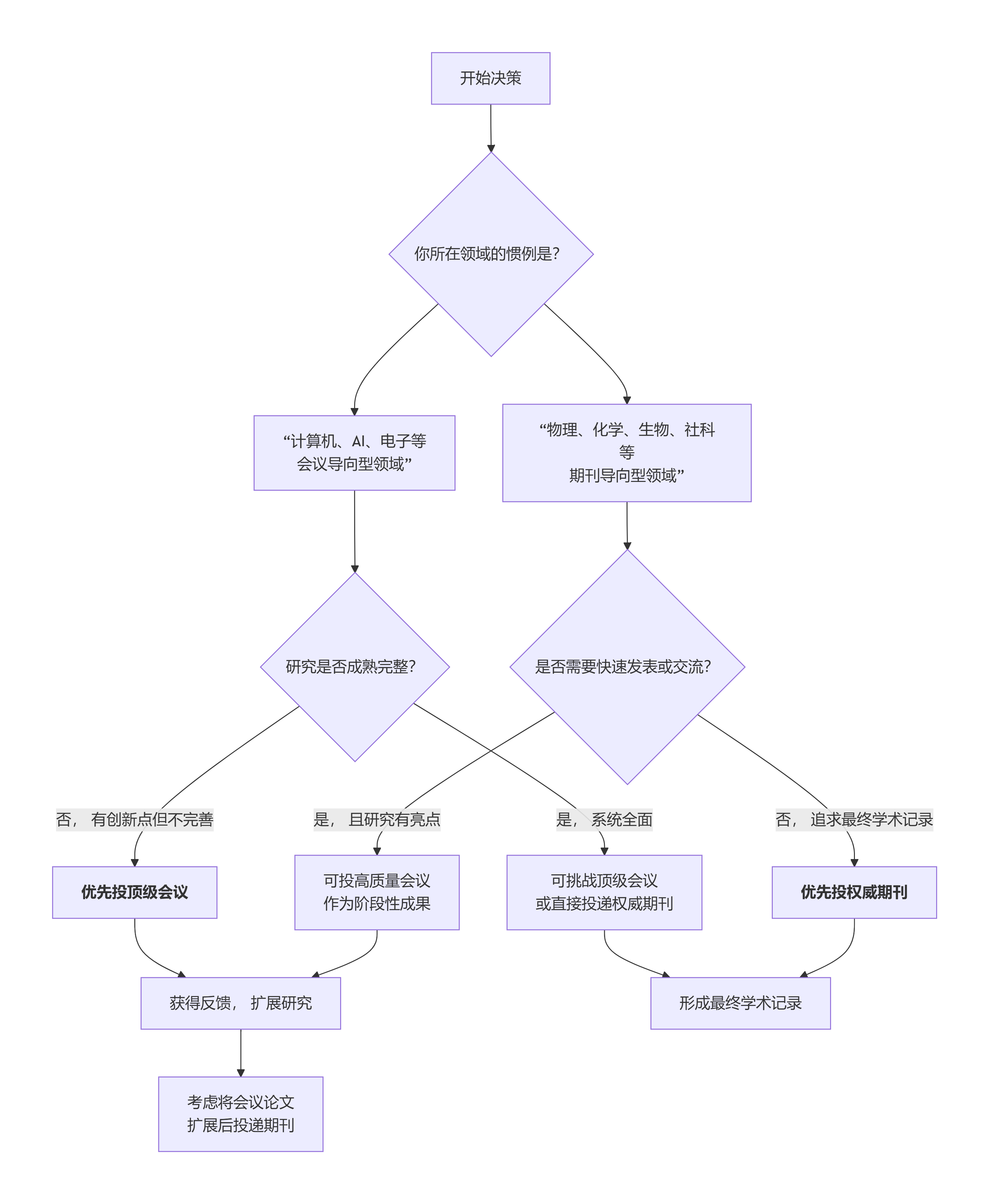
一个常见的策略:“会议+期刊”模式
在许多“会议导向型”领域,一个非常普遍且高效的成功策略是:
1. 第一步:投会议。将研究的核心创新点和初步实验结果整理成短文,投递给一个 deadline 临近的顶级会议。
好处:快速获得反馈,争取曝光机会,建立信心。
2. 第二步:扩展投期刊。如果会议论文被接收,根据会议上的反馈,进行更深入、更全面的研究,增加大量新的实验、理论和分析,将篇幅扩展30%-50%以上,然后投递给一个高水平的期刊(通常是该会议的关联期刊,如 IEEE Transactions 系列)。
好处:形成一份完整、扎实的学术记录,满足毕业或职称评定的高要求。
重要提醒:采用此策略时,必须遵守学术道德:
必须在期刊投稿时明确引用之前的会议论文。
必须确保期刊论文相比会议论文有实质性的新内容(通常要求至少30%以上),否则会被视为“重复发表”(self-plagiarism)。
总结
没有绝对的“好”与“不好”,只有“合适”与“不合适”。你的选择应基于:
1. 领域惯例(决定性因素)
2. 研究成熟度
3. 个人职业发展的时间表
4. 对学术交流的需求
建议在做决定前,务必与你的导师或课题组内的资深成员充分讨论,他们的经验是最宝贵的参考。
会议投稿查重是标准流程,而且是至关重要的一步。
对于学术研究者,尤其是学生和刚入门的研究者,了解会议查重的方方面面非常重要。下面将为您详细解释其重要性、要求和注意事项。
一、 重要性:为什么会议投稿必须查重?
会议查重绝非形式主义,其核心目的在于维护学术界的基石。
1. 维护学术诚信
这是最根本的原因。查重可以有效地识别和杜绝抄袭、剽窃等学术不端行为,确保所有投稿作品都是作者的原创工作。
2. 保证会议质量和声誉
一个会议的声誉建立在所发表论文的质量和原创性之上。如果大量接收重复或抄袭的论文,会议的权威性和影响力会急剧下降,未来将难以吸引高质量的投稿和参会者。
3. 保护知识产权
确保作者的思想和成果得到尊重,防止他人的劳动成果被非法占用。同时,也保护作者自己,避免无意中侵犯他人的版权。
4. 避免“一稿多投”
大部分学术会议都明确要求投稿必须是未公开发表过的原创作品。查重系统可以轻松检测出稿件是否已经或同时投给了其他会议或期刊,这浪费了评审专家的宝贵时间,是严重的学术不端行为。
5. 确保公平竞争
为所有投稿者创造一个公平的竞争环境。如果抄袭的论文被接收,对那些辛勤完成原创工作的作者是极大的不公。
二、 要求与标准:会议查重看什么?
不同的会议在严格程度上可能有差异,但通常关注以下几点:
1. 查重系统
绝大多数国际会议使用 iThenticate(CrossCheck)。这是学术界最权威、最常用的查重软件,其数据库包含海量的学术期刊、会议论文和书籍章节。
国内会议或部分领域也可能使用知网、万方等系统。
很多会议在投稿系统中直接集成查重功能,作者提交后会自动生成查重报告供程序委员会查看。
2. 相似度百分比
这是一个关键的量化指标,但没有统一的“及格线”。
常见阈值:许多会议要求整体相似度低于 15%-25%。但这只是一个参考,更重要的是分析相似部分的构成。
“绿色”区域(如<15%):通常比较安全,但仍需检查。
“黄色”区域(如15%-30%):会引起警惕,需要仔细审查。
“红色”区域(如>30%):很可能直接被拒,或需要大幅修改。
3. 相似内容的“质量”比“数量”更重要
评审专家和程序主席不会只看一个数字就做决定,他们会仔细分析查重报告:
哪些部分相似? 是方法描述、公式推导,还是核心思想和实验结果?
相似来源是什么?
与自己的已发表工作相似(自我抄袭):这是灰色地带。重复使用自己过去论文中的大量文本(尤其是描述标准方法、实验设置的部分)而未引用,同样被视为问题。
与共同作者的相似:如果合作者之间未妥善协调,可能导致查重问题,需要解释。
与经典定义、公式的相似:对于领域内公认的定义、公式或公理,不可避免的相似通常是可接受的。
与无关第三方的相似:这是最危险的,直接指向抄袭。
三、 注意事项与最佳实践:如何应对查重?
为了避免在查重环节出现问题,请务必做到以下几点:
1. 投稿前自行查重
强烈建议在正式投稿前,自己先使用可靠的查重工具进行检查。你可以通过:
iThenticate:部分高校和机构为师生提供账号,可以咨询所在机构。
Turnitin:主要用于学生作业,但其数据库与iThenticate有重叠,可作为参考。
其他商业查重服务。
这能让你提前发现问题并进行修改。
2. 正确引用和改写
直接引用:对于必须逐字使用的句子,务必使用引号并准确引用来源。
释义/改写:这是更推荐的方式。在理解原文思想后,用自己的话重新表述。注意,仅仅替换几个同义词不算有效的改写,必须改变句子结构和表达方式。
引用思想:即使你完全用自己的话描述了他人的观点或发现,也必须引用原始文献。
3. 处理好“自我抄袭”
如果你需要重复自己之前工作的一部分(例如,实验设备描述),正确的做法是:
进行改写,使其表达不同。
如果必须原文照搬,需引用自己之前的论文,并向会议说明情况(有些投稿系统有相关选项)。
切记,将已发表的论文稍作修改后作为新成果再次投稿是严重的不端行为。
4. 注意“一稿多投”
绝对不要将同一篇论文同时投给多个会议。必须等一个会议做出决定(被拒或自己撤回)后,才能投给下一个。这是学术道德的基本要求。
5. 仔细阅读会议的“作者指南”
每个会议都会在投稿页面上明确其关于原创性和查重的政策。务必仔细阅读并严格遵守。
6. 保留所有研究和写作过程的记录
保留笔记、草稿、数据等,以防需要证明你的工作是独立完成的。
总结
会议投稿查重是学术出版不可或缺的“防火墙”。它保护了诚信、质量和公平。作为作者,你的最佳策略是:
尊重原创:从心底里认同并践行学术诚信。
事前防范:投稿前自行查重,仔细修改。
规范写作:学会正确引用和有效改写。
遵守规则:认真阅读并遵循特定会议的所有要求。
以严谨和诚实的态度对待论文写作和投稿,不仅能顺利通过查重,更是每一位研究者长远发展的基石。
合作伙伴







